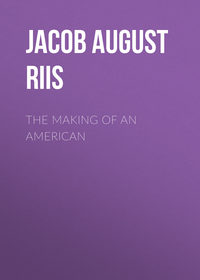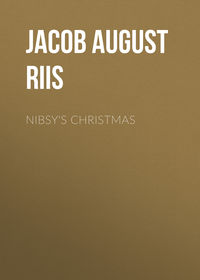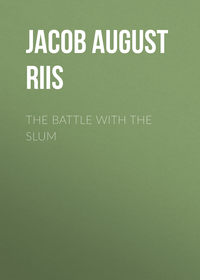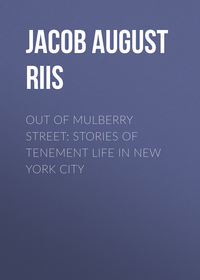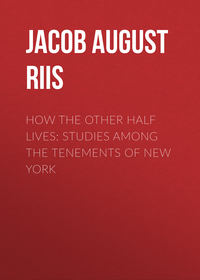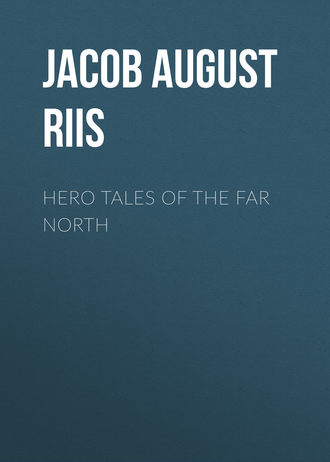 полная версия
полная версияHero Tales of the Far North
NIELS FINSEN, THE WOLF-SLAYER
Hard by the town of Thorshavn, in the Faröe islands, a little lad sat one day carving his name on a rock. His rough-coated pony cropped the tufts of stunted grass within call. The grim North Sea beat upon the shore below. What thoughts of the great world without it stirred in the boy he never told. He came of a people to whom it called all through the ages with a summons that rarely went unheeded. If he heard he gave no sign. Slowly and laboriously he traced in the stone the letters N.R.F. When he had finished he surveyed his work with a quiet smile. "There!" he said, "that is done."
The years went by, and a distant city paused in its busy life to hearken to bells tolling for one who lay dead. Kings and princes walked behind his coffin and a whole people mourned. Yet in life he had worn no purple. He was a plain, even a poor man. Upon his grave they set a rock brought from the island in the North Sea, just like the other that stands there yet, and in it they hewed the letters N.R.F., for the man and the boy were one. And he who spoke there said for all mankind that what he wrought was well done, for it was done bravely and in love.
Niels Ryberg Finsen was born in 1860 in the Faröe islands, where his father was an official under the Danish Government. His family came of the sturdy old Iceland stock that comes down to our time unshorn of its strength from the day of the vikings, and back to Iceland his people sent him to get his education in the Reykjavik Latin school, after a brief stay in Denmark where his teachers failed to find the key to the silent, reserved lad. There he lived the seven pregnant years of boyhood and youth, from fourteen to twenty-one, and ever after there was that about him that brought to mind the wild fastnesses of that storm-swept land. Its mountains were not more rugged than his belief in the right as he saw it.
The Reykjavik school had a good name, but school and pupils were after their own kind. Conventional was hardly the word for it. Some of the "boys" were twenty and over. Finsen loved to tell of how they pursued the studies each liked best, paying scant attention to the rest. In their chosen fields they often knew much more than the curriculum called for, and were quite able to instruct the teacher; the things they cared less about they helped one another out with, so as to pass examinations. For mere proficiency in lessons they cherished a sovereign contempt. To do anything by halves is not the Iceland way, and it was not Niels Finsen's. All through his life he was impatient with second-hand knowledge and borrowed thinking. So he worked and played through the long winters of the North. In the summer vacations he roamed the barren hills, helped herd the sheep, and drank in the rough freedom of the land and its people. At twenty-one the school gave him up to the university at Copenhagen.
Training for life there was not the heyday of youthful frolicking we sometimes associate with college life in our day and land. Not until he was thirty could he hang up his sheepskin as a physician. Yet the students had their fun and their sports, and Finsen was seldom missing where these went on. He was not an athlete because already at twenty-three the crippling disease with which he battled twenty years had got its grip on him, but all the more he was an outdoor man. He sailed his boat, and practised with the rifle until he became one of the best shots in Denmark. And it is recorded that he got himself into at least one scrape at the university by his love of freedom.
The country was torn up at that time by a struggle between people and government over constitutional rights, and it had reached a point where a country parish had refused to pay taxes illegally assessed, as they claimed. It was their Boston tea-party. A delegation of the "tax refusers" had come to Copenhagen, where the political pot was boiling hot over the incident. The students were enthusiastic, but the authorities of the university sternly unsympathetic. The "Reds" were for giving a reception to the visitors in Regentsen, the great dormitory where, as an Iceland student, Finsen had free lodging; but it was certain that the Dean would frown upon such a proposition. So they applied innocently for permission to entertain some "friends from the country," and the party was held in Finsen's room. Great was the scandal when the opposition newspapers exploited the feasting of the tax refusers in the sacred precincts of the university. To the end of his days Finsen chuckled over the way they stole a march on the Dean.
For two or three years after getting his degree he taught in the medical school as demonstrator, eking out his scant income by tutoring students in anatomy. His sure hand and clear decision in any situation marked him as a practitioner of power, and he had thoughts once of devoting himself to the most delicate of all surgery,—that of the eye. He was even then groping for his life-work, without knowing it, for it was always light, light—the source or avenue or effect of it—that held him. And presently his work found him.
It has been said that Finsen was a sick man. A mysterious malady15 with dropsical symptoms clutched him from the earliest days with ever tightening grip, and all his manhood's life he was a great but silent sufferer. Perhaps it was that; perhaps it was the bleak North in which his young years had been set that turned him to the light as the source of life and healing. He said it himself: "It was because I needed it so much, I longed for it so." Probably it was both. Add to them his unique power of turning the things of everyday life to account in his scientific research, and one begins to understand at once his success and his speedy popularity. He dealt with the humble things of life, and got to the heart of things on that road. And the people comprehended; the wise men fell in behind him—sometimes a long way behind.
In the yard of Regentsen there grows a famous old linden tree. Standing at his window one day and watching its young leaf sprout, Finsen saw a cat sunning itself on the pavement. The shadow of the house was just behind it and presently crept up on pussy who got up, stretched herself, and moved into the sunlight. In a little while the shadow overtook her there, and pussy moved once more. Finsen watched the shadow rout her out again and again. It was clear that the cat liked the sunlight.
A few days later he stood upon a bridge and saw a little squad of insects sporting on the water. They drifted down happily with the stream till they came within the shadow of the bridge, when they at once began to work their way up a piece to get a fresh start for a sunlight sail. Finsen knew just how they felt. His own room looked north and was sunless; his work never prospered as it did when he sat with a friend whose room was on the south side, where the sun came in. It was warm and pleasant; but was that all? Was it only the warmth that made the birds break into song when the sun came out on a cloudy day, made the insects hum joyously and man himself walk with a more springy step? The housekeeper who "sunned" the bed-clothes and looked with suspicion on a dark room had something else in mind; the sun "disinfected" the bedding. Finsen wanted to know what it was in the sunlight that had this power, and how we could borrow it and turn it to use.
The men of science had long before analyzed the sunlight. They had broken it up into the rays of different color that together make the white light we see. Any boy can do it with a prism, and in the band or spectrum of red, yellow, green, blue, and violet that then appears, he has before him the cipher that holds the key to the secrets of the universe if we but knew how to read it aright; for the sunlight is the physical source of all life and of all power. The different colors represent rays with different wave-lengths; that is, they vibrate with different speed and do different work. The red vibrate only half as fast as the violet, at the other end of the spectrum, and, roughly speaking, they are the heat carriers. The blue and violet are cold by comparison. They are the force carriers. They have power to cause chemical changes, hence are known as the chemical or actinic rays. It is these the photographer shuts out of his dark room, where he intrenches himself behind a ruby-colored window. The chemical ray cannot pass that; if it did it would spoil his plate.
This much was known, and it had been suggested more than once that the "disinfecting" qualities of the sunlight might be due to the chemical rays killing germs. Finsen, experimenting with earthworms, earwigs, and butterflies, in a box covered with glass of the different colors of the spectrum, noted first that the bugs that naturally burrowed in darkness became uneasy in the blue light. As fast as they were able, they got out of it and crawled into the red, where they lay quiet and apparently content. When the glass covers were changed they wandered about until they found the red light again. The earwigs were the smartest. They developed an intelligent grasp of the situation, and soon learned to make straight for the red room. The butterflies, on the other hand, liked the red light only to sleep in. It was made clear by many such experiments that the chemical rays, and they only, had power to stimulate, to "stir life." Finsen called it that himself. In the language of the children, he was getting "warm."
That this power, like any other, had its perils, and that nature, if not man, was awake to them, he proved by some simple experiments with sunburn. He showed that the tan which boys so covet was the defence the skin puts forth against the blue ray. The inflammation of sunburn is succeeded by the brown pigmentation that henceforth stands guard like the photographer's ruby window, protecting the deeper layers of the skin. The black skin of the negro was no longer a mystery. It is his protection against the fierce sunlight of the tropics and the injurious effect of its chemical ray.
Searching the libraries in Copenhagen for the records of earlier explorers in his field, and finding little enough there, Finsen came across the report of an American army surgeon on a smallpox epidemic in the South in the thirties of the last century. There were so many sick in the fort that, every available room being filled, they had to put some of the patients into the bomb-proof, to great inconvenience all round, as it was entirely dark there. The doctor noted incidentally that, as if to make up for it, the underground patients got well sooner and escaped pitting. To him it was a curious incident, nothing more. Upon Dr. Finsen, sitting there with the seventy-five-year-old report from over the sea in his hand, it burst with a flood of light: the patients got well without scarring because they were in the dark. Red light or darkness, it was all the same. The point was that the chemical rays that could cause sunburn on men climbing glaciers, and had power to irritate the sick skin, were barred out. Within a month he jolted the medical world by announcing that smallpox patients treated under red light would recover readily and without disfigurement.
The learned scoffed. There were some of them who had read of the practice in the Middle Ages of smothering smallpox patients in red blankets, giving them red wine to drink and hanging the room with scarlet. Finsen had not heard of it, and was much interested. Evidently they had been groping toward the truth. How they came upon the idea is not the only mystery of that strange day, for they knew nothing of actinic rays or sunlight analyzed. But Finsen calmly invited the test, which was speedy in coming.
They had smallpox in Bergen, Norway, and there the matter was put to the proof with entire success; later in Sweden and in Copenhagen. The patients who were kept under the red light recovered rapidly, though some of them were unvaccinated children, and bad cases. In no instance was the most dangerous stage of the disease, the festering stage, reached; the temperature did not rise again, and they all came out unscarred.
Finsen pointed out that where other methods of treatment such as painting the face with iodine or lunar caustic, or covering it with a mask or with fat, had met with any success in the past, the same principle was involved of protecting the skin from the light, though the practitioner did not know it. He was doing the thing they did in the middle ages, and calling them quacks.
It is strange but true that Dr. Finsen had never seen a smallpox patient at that time, but he knew the nature of the disease, and that the sufferer was affected by its eruption first and worst on the face and hands—that is to say, on the parts of the body exposed to the light—and he was as sure of his ground as was Leverrier when, fifty years before, he bade his fellow astronomers look in a particular spot of the heavens for an unknown planet that disturbed the movements of Uranus. And they found the one we call Neptune there.
Presently all the world knew that the first definite step had been taken toward harnessing in the service of man the strange force in the sunlight that had been the object of so much speculation and conjecture. The next step followed naturally. In the published account of his early experiments Finsen foreshadows it in the words, "That the beginning has been made with the hurtful effects of this force is odd enough, since without doubt its beneficial effect is far greater." His clear head had already asked the question: if the blue rays of the sun can penetrate deep enough into the skin to cause injury, why should they not be made to do police duty there, and catch and kill offending germs—in short, to heal?
Finsen had demonstrated the correctness of the theory that the chemical rays have power to kill germs. But it happens that these are the rays that possess the least penetration. How to make them go deeper was the problem. By an experiment that is, in its simplicity, wholly characteristic of the man, he demonstrated that the red blood in the deeper layers of the skin was the obstacle. He placed a piece of photographic paper behind the lobe of his wife's ears and concentrated powerful blue rays on the other side. Five minutes of exposure made no impression on the paper; it remained white. But when he squeezed all the blood out of the lobe, by pressing it between two pieces of glass, the paper was blackened in twenty seconds.
That night Finsen knew that he had within his grasp that which would make him a rich man if he so chose. He had only to construct apparatus to condense the chemical rays and double their power many times, and to apply his discovery in medical practice. Wealth and fame would come quickly. He told the writer in his own simple way how he talked it over with his wife. They were poor. Finsen's salary as a teacher at the university was something like $1200 a year. He was a sick man, and wealth would buy leisure and luxury. Children were growing up about them who needed care. They talked it out together, and resolutely turned their backs upon it all. Hand in hand they faced the world with their sacrifice. What remained of life to him was to be devoted to suffering mankind. That duty done, what came they would meet together. Wealth never came, but fame in full measure, and the love and gratitude of their fellow-men.
There is a loathsome disease called lupus, of which, happily, in America with our bright skies we know little. Lupus is the Latin word for wolf, and the ravenous ailment is fitly named, for it attacks by preference the face, and gnaws at the features, at nose, chin, or eye, with horrible, torturing persistence, killing slowly, while the patient shuts himself out from the world praying daily for death to end his misery.
In the north of Europe it is sadly common, and there had never been any cure for it. Ointments, burning, surgery—they were all equally useless. Once the wolf had buried its fangs in its victim, he was doomed to inevitable death. The disease is, in fact, tuberculosis of the skin, and is the most dreadful of all the forms in which the white plague scourges mankind—was, until one day Finsen announced to the world his second discovery, that lupus was cured by the simple application of light.
It was not a conjecture, a theory, like the red-light treatment for smallpox; it was a fact. For two years he had been sending people away whole and happy who came to him in despair. The wolf was slain, and by this silent sufferer whose modest establishment was all contained within a couple of small shanties in a corner of the city hospital grounds, at Copenhagen.
There was a pause of amazed incredulity. The scientific men did not believe it. Three years later, when the physician in charge of Finsen's clinic told at the medical congress in Paris of the results obtained at the Light Institute, his story was still received with a polite smile. The smile became astonishment when, at a sign from him, the door opened and twelve healed lupus patients came in, each carrying a photograph of himself as he was before he underwent the treatment. Still the doctors could not grasp it. The thing was too simple as matched against all their futile skill.
But the people did not doubt. There was a rush from all over Europe to Copenhagen. Its streets became filled with men and women whose faces were shrouded in heavy bandages, and it was easy to tell the new-comers from those who had seen "the professor." They came in gloom and misery; they went away carrying in their faces the sunshine that gave them back their life. Finsen never tired, when showing friends over his Institute, of pointing out the joyous happiness of his patients. It was his reward. For not "science for science's sake," or pride in his achievement, was his aim and thought, but just the wish to do good where he could. Then, in three more years, they awarded him the great Nobel prize for signal service to humanity, and criticism was silenced. All the world applauded.
"They gave it to me this year," said Finsen, with his sad little smile, "because they knew that next year it would have been too late." And he prophesied truly. He died nine months later.
All that is here set down seems simple enough. But it was achieved with infinite toil and patience, by the most painstaking experiments, many times repeated to make sure. In his method of working Finsen was eminently conservative and thorough. Nothing "happened" with him. There was ever behind his doings a definite purpose for which he sought a way, and the higher the obstacles piled up the more resolutely he set his teeth and kept right on. "The thing is not in itself so difficult," he said, when making ready for his war upon the wolf, "but the road is long and the experiments many before we find the right way."
He took no new step before he had planted his foot firmly in the one that went before; but once he knew where he stood, he did not hesitate to question any scientific dogma that opposed him, always in his own quiet way, backed by irrefutable facts. In a remarkable degree he had the faculty of getting down through the husk to the core of things, but he rejected nothing untried. The little thing in hand, he ever insisted, if faithfully done might hold the key to the whole problem; only let it be done now to get the matter settled.
Whatever his mind touched it made perfectly clear, if it was not so already. As a teacher of anatomy he invented a dissecting knife that was an improvement on those in use, and clamps for securing the edges of a wound in an operation. As a rifle shot he made an improved breech; as a physician, observing the progress of his own disease, an effective blood powder for anæmia. At the Light Institute, which friends built for him, and the government endowed, he devised the powerful electric lamps to which he turned in the treatment of lupus, for the sun does not shine every day in Copenhagen; and when it did not, the lenses that gathered the blue rays and concentrated them upon the swollen faces were idle. And gradually he increased their power, checking the heat rays that would slip through and threatened to scorch the patient's skin, by cunning devices of cooling streams trickling through the tubes and the hollow lenses.
Nothing was patented; it was all given freely to the world. The decision which he and his wife made together was made once for all. When the great Nobel prize was given to him he turned it over to the Light Institute, and was with difficulty persuaded to keep half of it for himself only when friends raised an equal amount and presented it to the Institute.
Finsen knew that his discoveries were but the first groping steps upon a new road that stretched farther ahead than any man now living can see. He was content to have broken the way. His faith was unshaken in the ultimate treatment of the whole organism under electric light that, by concentrating the chemical rays, would impart to the body their life-giving power. He himself was beyond their help. Daily he felt life slipping from him, but no word of complaint passed his lips. He prescribed for himself a treatment that, if anything, was worse than the disease. Only a man of iron will could have carried it through.
A set of scales stood on the table before him, and for years he weighed every mouthful of food he ate. He suffered tortures from thirst because he would allow no fluid to pass his lips, on account of his tendency to dropsy. Through it all he cheerfully kept up his labors, rejoicing that he was allowed to do so much. His courage was indomitable; his optimism under it all unwavering. His favorite contention was that there is nothing in the world that is not good for something, except war. That he hated, and his satire on the militarism of Europe as its supreme folly was sharp and biting.
Of such quality was this extraordinary man of whom half the world was talking while the fewest, even in his own home city, ever saw him. Fewer still knew him well. It suited his temper and native modesty, as it did the state of his bodily health, to keep himself secluded. His motto was: "bene vixit qui bene latuit—he has lived well who has kept himself well hidden"—and his contention was always that in proportion as one could keep himself in the background his cause prospered, if it was a good cause. When kings and queens came visiting, he could not always keep in hiding, though he often tried. On one of his days of extreme prostration the dowager empress of Russia knocked vainly at his door. She pleaded so hard to be allowed to see Dr. Finsen that they relented at last, and she sat by his bed and wept in sympathy with his sufferings, while he with his brave smile on lips that would twitch with pain did his best to comfort her. She and Queen Alexandra, both daughters of King Christian, carried the gospel of hope and healing from his study to their own lands, and Light Institutes sprang up all over Europe.
In his own life he treated nearly nineteen hundred sufferers, two-thirds of them lupus patients, and scarce a handful went from his door unhelped. When his work was done he fell asleep with a smile upon his lips, and the "universal judgment was one of universal thanksgiving that he had lived." He was forty-three years old.
When the news of his death reached the Rigsdag, the Danish parliament, it voted his widow a pension such as had been given to few Danes in any day. The king, his sons and daughters, and, as it seemed, the whole people followed his body to the grave. The rock from his native island marks the place where he lies. His work is his imperishable monument. His epitaph he wrote himself in the speech another read when the Nobel prize was awarded him, for he was then too ill to speak.
"May the Light Institute grasp the obligation that comes with its success, the obligation to maintain what I account the highest aim in science—truth, faithful work, and sound criticism."
1
He was not mortally wounded, and Tordenskjold took him prisoner later at the capture of Marstrand.
2
The older spelling of this name is followed here in preference to the more modern Gustaf. Gustav Vasa himself wrote his name so.
3
Pronounce Reeg.
4
Pronounce Snaré, with a as in are. In the Danish hare rhymes with snare, so pronounced.
5
Pronounced Veethé.
6
That all this in no way affected the personal relations of the two men Saxo assures us in one of the little human touches with which his chronicle abounds. When Eskild was going away to end his days as a monk in the monastery of Clairvaux, he rested awhile with Absalon at his castle Haffn, where he was received as a father. The old man suffered greatly from cold feet, and Absalon made a box with many little holes in, and put a hot brick in it. With this at his feet, Eskild was able to sleep, and he was very grateful to Absalon, both because of the comfort it gave him and "because that he perceived that filial piety rather than skill in the healer's art" prompted the invention.



